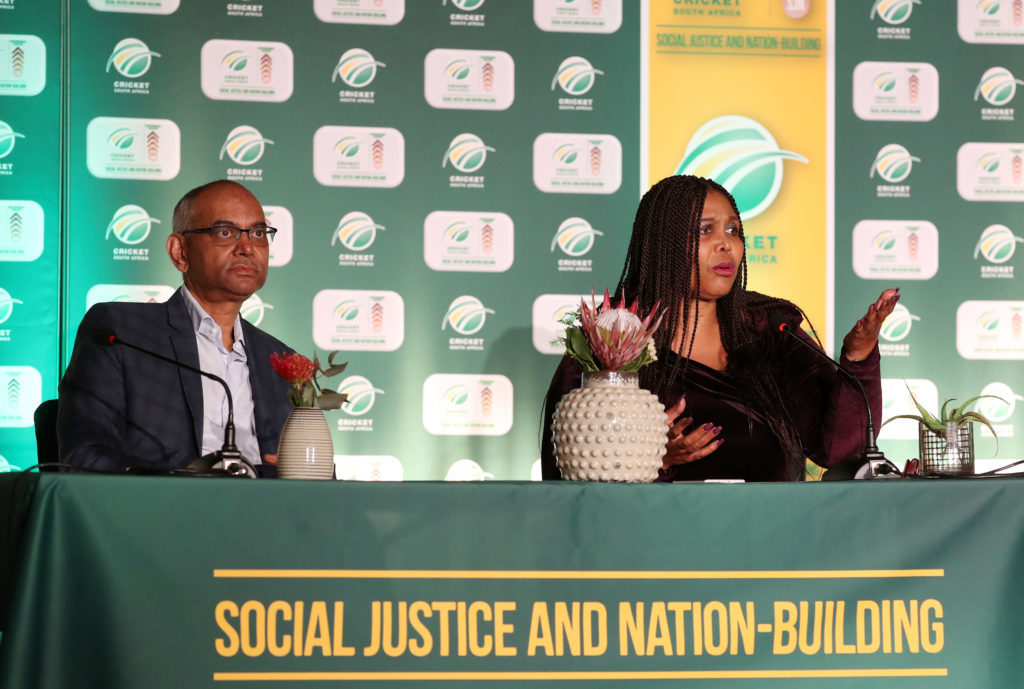The proposed Restoration Fund for cricketers who feel wronged by racial prejudice has the potential to be a complex mess and doesn’t address the root cause, writes RYAN VREDE.
On Friday Cricket South Africa (CSA) officially launched the Cricket for Social Justice and Nation Building (SJN) system and appointed Advocate Dumisa Ntsebeza as transformation ombudsman.
Characterised as ‘… an independent complaints system that will look at the healing, restoration and uniting process of cricket players, fans, and the nation, starting with the former players’, the SJN is comparable to the Truth and Reconciliation Commission (TRC) which played an integral part in beginning the post-apartheid healing process.
Many in the cricket fraternity have called for this to be established and I support it in principle. However, the focus is too broad and includes the establishment of a Restoration Fund to deal with the opportunity cost of discrimination that looks doomed to fail from the outset, further embarrassing an organisation that has been plagued by controversy for more than a year.
The concept of financial reparation in itself is good and just. Working this out is extremely complex.
For a start you’d need highly competent leadership to drive the process. CSA will hold their AGM in September and will need to fill a number of key roles, including president and CEO. Kugandrie Govender, the acting CEO, is highly regarded and is likely to be voted into the position full time. Part of her job will be raising the money required for the Restoration Fund.
Yes, CSA is establishing a fund they have no money to fund.
The organisation will rely on investments from corporates, many of whom have lost confidence in CSA’s ability to function at even a base level of efficiency. They’ll also approach the cash-strapped South African government for assistance. That these are the primary fundraising streams reflect a serious lack of consideration around the complexities of this fund.
Then there’s the issue of formulating bullet-proof criteria for determining who will be compensated and who doesn’t qualify. This brings with it a depth of complexity CSA doesn’t have the capacity to negotiate.
One assumes that a player such as Aaron Phangiso, who was the only player to carry drinks for the duration of the 2015 World Cup, may put forward a case. As may Lions coach Geoffrey Toyana, who was overlooked for the Proteas head coach role in favour of West Indian Ottis Gibson in 2017. It’s safe to assume Thami Tsolikele would lodge a case, given that he recently cast himself as the victim in Graeme Smith’s alleged scheme to keep him out of the team in 2012, and thereafter. What about Makhaya Ntini, who played nearly 200 international matches for the Proteas, but spoke recently publicly about what he considers being forced into premature retirement?
But how do these potential claimants, and others whose cases are equally hard to prove because it largely relies on a sense of being undermined rather than blatant prejudice, nuance and assumed intent, lay out their case in a manner that results in them meeting the compensation criteria? In fact, how does one even establish criteria for compensation for acts of prejudice, which are often purposefully veiled and subtle in their execution?
Dr Eugenia Kula-Ameyaw, a CSA independent board director and its transformation chair, told Cricinfo’s Firdose Moonda: ‘If you work in an asbestos factory and they are affected by TB, you get compensated. There’s nothing wrong with compensation when people have lost income.’
What the good doctor fails to understand is that there is a clear cause-and-effect link, underpinned by scientific research, between working in an asbestos factory and respiratory ailments. Prejudice doesn’t work like this. There may be a clutch of cases that will clearly exhibit cause and effect. Most will be defined by a nagging sense, amplified by observations and lived experience, the victims of such prejudice have about their oppression. You can’t establish an absolute criterion for that?
CSA has also further complicated its plan by not stipulating what scenarios are considered opportunity cost. Kula-Ameyaw said: ‘If something is fair, it will be fair to everybody.’
This leaves the door open for white players who are omitted because of the target system – which stipulates franchise teams have to field a minimum of six black players, three of whom must be black African – to lodge claims for opportunity costs. If this is the case, it is a tacit acknowledgement from CSA that the system is fundamentally flawed. This then opens the body up to a litany of serious legal challenges, including some from the inception of the target system or forms thereof. In theory, Kevin Pietersen, who claims the system forced him to further his career in England, would have legal grounds to sue.
It’s a mess. And in the midst of this grand plan to address the serious issue of prejudice in the game, CSA doesn’t acknowledge its chronic failure at grassroots level. Success here has the potential to create lasting change, achieved through ensuring more equal opportunities for young black cricketers.
A Restoration Fund is a good thing, provided there is clarity on the criteria that qualify one for reparation. But it isn’t going to solve the problem that got us here in the first place – a deeply unequal playing field between the rich and poor who play the game, specifically at junior levels.
South African cricket will be haunted by this issue until Thando in Thembisa is afforded the same opportunities to touch the ceiling of his potential as Simon in Sandton is. Throwing money at Thabo after he tells his story is only a small part of the answer.
Photo: Muzi Ntombela/BackpagePix







